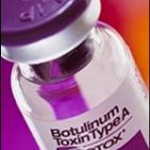
It is this reconstitution phase that has caused a bit of confusion recently. A single bottle of Botox has enough solution, once reconstituted, to treat as many as five patients depending upon the facial areas to be injected. The manufacturers states that the bottle is for ‘single patient use’, which is a requirement by the FDA. On a practical basis in common practice, few if any plastic surgeons use only one bottle per patient. This is cost prohibitive and a waste of an expensive solution if it must be discarded after a single patient draw from a bottle. While new syringes and needles are used, each subsequent patient is drawn from the same reconstituted bottle until the contents are used up. I have done this for years and have never seen any problems with doing so. There have never been any contamination or infectivity reports of problems with Botox injections around the world using this method, which undoubtably numbers in the hundreds of millions of patients treated over the past ten years.
However, problems have arisen recently out of various clinics and treatment centers with using bottled medical solutions from which multiple draws were done. In some cases, cross-contamination and patient infections have occurred presumably due to the careless acts of reusing syringes and needles. (I repeat… these new reports have nothing to do with Botox or its manufacturer) Since Botox like all bottled drugs is a single use item, how can it be used then for multiple patients without needlessly wasting the excess and having each patient pay for more then what they actually get? My solution is to draw up all syringes at the time of Botox reconstitution. After a new bottle of Botox is mixed, I draw up 10 units per 1cc syringe and then refrigerate the 100 units or 10 syringes. I then just pull the number of needed syringes per patient, never having to do multiple draws from a single bottle of Botox.
While patient contamination issues have never occurred with Botox, I want to be proactive and eliminate even the most remote possibility of such an occurrence. Elective cosmetic treatments should be the safest, when possible, of all medical procedures.
Dr. Barry Eppley
Indianapolis, Indiana


